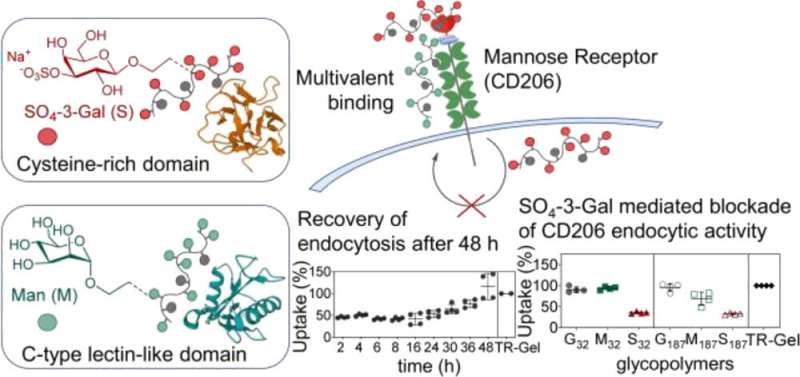This article has been reviewed according to Science X's editorial process and policies. Editors have highlighted the following attributes while ensuring the content's credibility:
fact-checked
peer-reviewed publication
trusted source
proofread
Sweet discovery has potential for effective new virus and cancer drug treatments

Scientists have discovered sugar-based molecules can be used to block activity of a receptor in cells that are involved in the development a range of viral infections and cancer.
Researchers from the University of Nottingham's Schools of Pharmacy and Life Sciences have found a new mechanism to block activity of the Mannose Receptor (also called CD206) that is present in a number of key immune cells. Their findings have been published in the Journal of the American Chemical Society.
Drs Giuseppe Mantovani and Luisa Martinez-Pomares from the University of Nottingham led the study and explain: "Therapies that block or change the immune response are already revolutionizing the treatment of many cancers and inflammatory diseases and being investigated for use in some viral and bacterial infections.
"CD206 is an important receptor in cells for immunity but can be hijacked by viruses, including Hepatitis B, Dengue Virus and HIV-1, and some cancers. For the first time we have found a family of molecules that specifically target and block the activity of this receptor which could lead to new drug developments."
The Mannose Receptor is present at the surface of key immune cells such as tissue macrophages—the specialized cells involved in the detection, and destruction of bacteria and other harmful organisms—and works by binding a range of molecules—e.g. specific sugars that decorate pathogens, as well as host molecules that need to be cleared from the circulation such as collagen.
Mantovani and Martinez-Pomares designed synthetic multivalent sugar molecules (glycopolymers) that block the ability of the Mannose Receptor to shuttle between the surface of the cell and internal cellular compartments, literally trapping the receptor within the cell and inhibiting its function. This has exciting implications for potential new treatments as the Mannose Receptor is an important therapeutic target in cancer and infectious diseases.
More information: Francesca Mastrotto et al, Sulfation at Glycopolymer Side Chains Switches Activity at the Macrophage Mannose Receptor (CD206) In Vitro and In Vivo, Journal of the American Chemical Society (2022). DOI: 10.1021/jacs.2c10757
Journal information: Journal of the American Chemical Society
Provided by University of Nottingham





















